Stettin assault. How to destroy the 3rd tank army
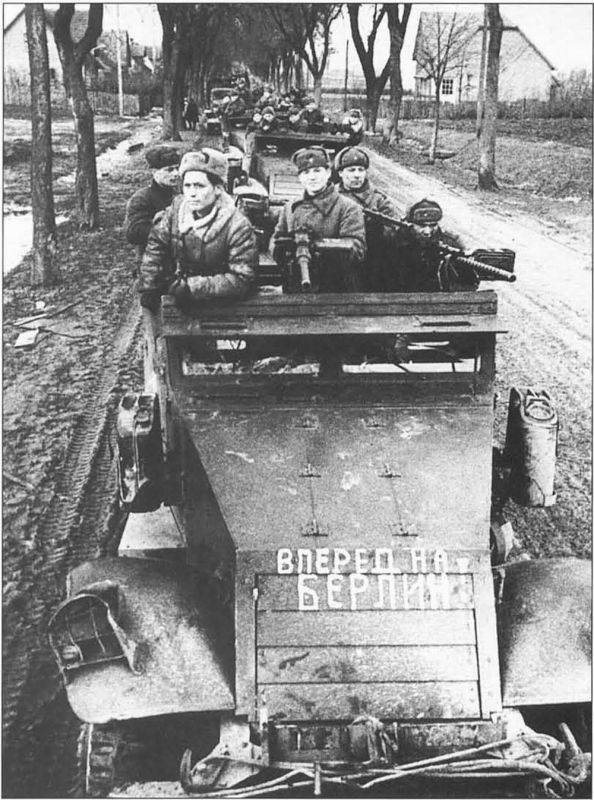
The Agony of the Third Reich. On April 26, 1945, 75 years ago, after a week of fighting, the troops of the 2nd Belorussian Front captured Pomerania's main city - Stettin. On May 1, our troops took Rostock; on May 3, in the Wismar area, they established contact with the British.
As a result, the main forces of the German 3rd tank armies were destroyed. The army of Mantoifel (Manteuffel) could not come to the aid of Berlin. The exit of Rokossovsky’s armies to the Baltic Sea did not give the German command the possibility of sea transfer for the defense of the Reich divisions from Courland.
The general situation in the Pomeranian direction
After the liquidation of the East Pomeranian Wehrmacht group, the Rokossovsky armies were deployed westward to Stettin and Rostock to take part in the Berlin strategic operation. Part of the forces of the 2nd Belorussian Front (2nd BF) remained in the east to defeat the enemy group on the Putziger-Nerung Spit north of Gdansk (19th Army) and to defend the Baltic Sea coast to the Oder. The main front group was heading to the Altdamm-Schwedt section.
Rokossovsky’s troops were to strike north of Berlin, cutting off the northern flank of the Berlin group and providing the 1st Belorussian front from the northern flank. Destroy German troops north of the German capital, go to the Baltic coast. The 1st BF was to launch an offensive a little later than the troops of the 1st BF and 1st UV in order to complete the regrouping of forces. It was a very difficult task. The 2nd BF, in fact, was still completing the hostilities in Eastern Pomerania. The troops that had just been advancing in the east had to be deployed to the west in order to overcome 300-350 km with a forced march. It was necessary to go in places where intense battles had just ended, where there were many destructions and ashes. Work on clearing and restoring roads and crossings over numerous water obstacles has just begun. The railways barely worked, the canvas and bridges were in such a condition that the trains barely went. Rolling stock was not enough. And in such circumstances, it was necessary to transfer hundreds of thousands of people, thousands of guns, tanks and other equipment, tens of thousands of tons of ammunition, various military equipment, etc.
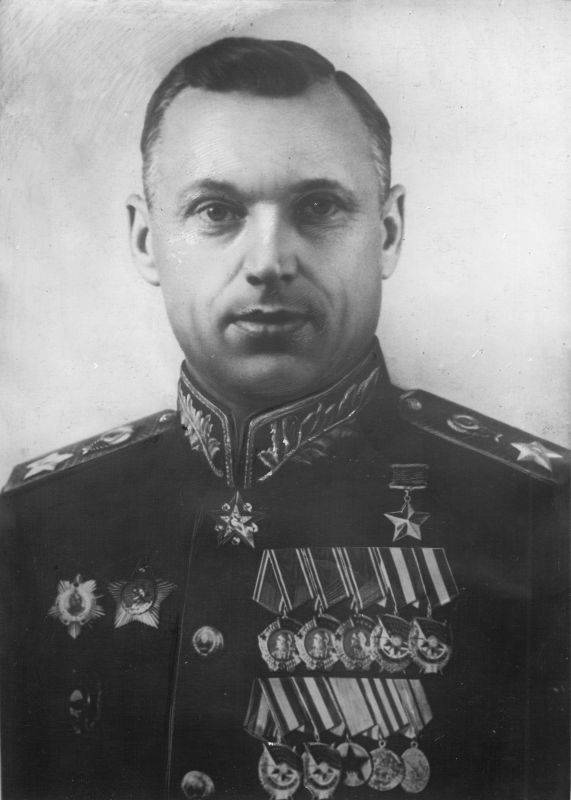
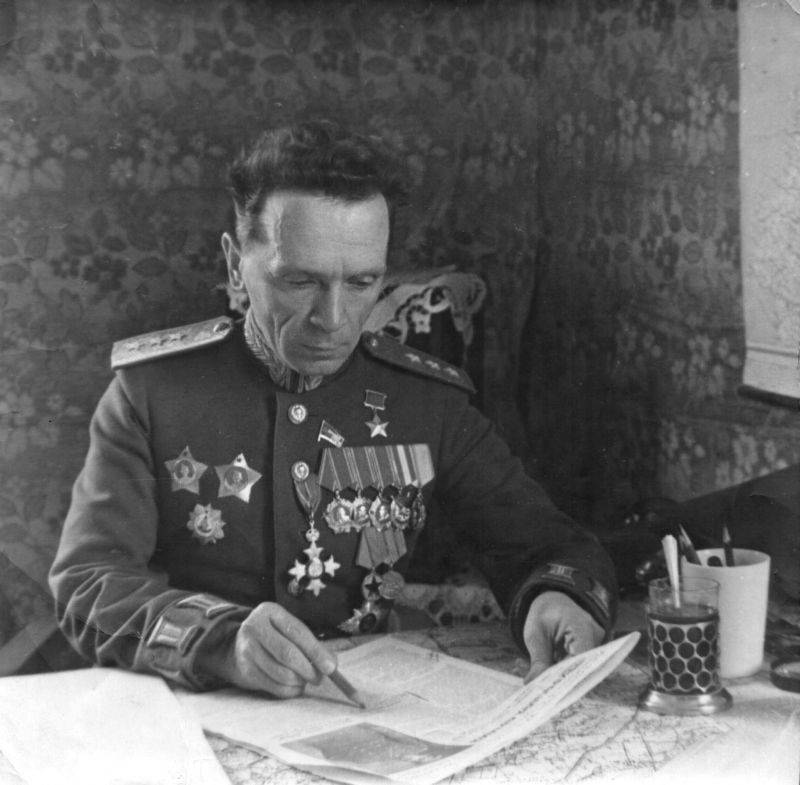
The armies of the 2nd BF made a difficult march and were supposed to launch an offensive almost without any serious preliminary preparation. In the future, this will complicate the operation. The troops of Rokossovsky had to force a large water barrier - the Oder in the lower reaches. The river here formed two broad channels: the Ost-Oder and the West-Oder (East and West Oder). Between them was a floodplain, which at that time was flooded. That is, before the troops there was a water strip up to 5 km wide. At the same time, it was impossible to go on boats through the floodplain - too shallow. Soviet soldiers gave an accurate definition of the situation: "Two Dnieper, and in the middle of Pripyat."
In addition, the right bank was high, dominating the river, which strengthened the position of the Nazis. The floodplain flooded with water was almost impassable. But in some places there were remains of dilapidated dams and embankments, it was decided to use them. Dams were on the sections of the 65th (destroyed highway) and 49th army. It is also worth noting that the armies of Rokossovsky just carried out a complex and bloody East Pomeranian operation. The divisions did not have time to replenish, in them there were only 3,5-5 thousand soldiers.
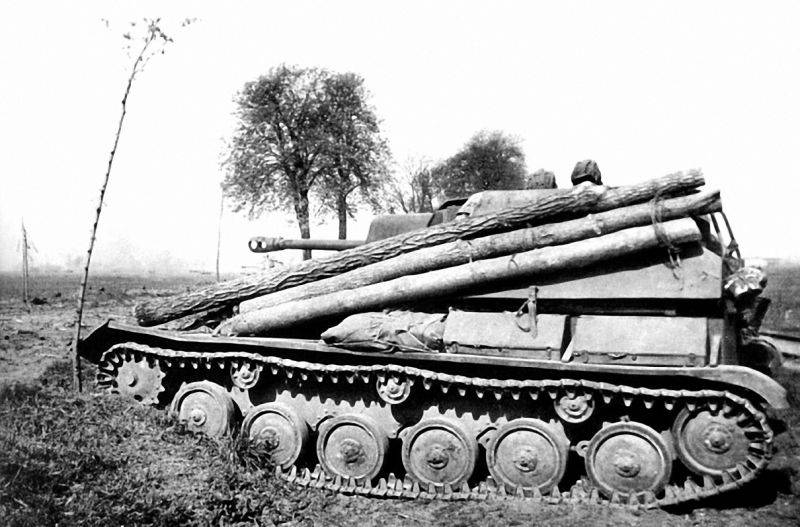
German defense
The main line of German defense was equipped along the western bank of the Western Oder River. It reached a depth of 10 km and consisted of two or three positions. Each position had one or two continuous trenches. Every 10-15 meters along the banks of the Oder there were cells for shooters and machine gunners, connected with the trench by the passageways. All settlements to a depth of 40 km were turned into strongholds. The second defense line passed along the western bank of the river. Randov, 20 km from the Oder. Further there was also a third defense line.
The isthmus from the Baltic coast from Wald-Divenov to Zaeger (only 30 km along the front) was held by the Svinemünde corps group under the command of General Freilich. It included: the marine infantry and five serf regiments, two battalions of the marine corps, parts of the training infantry division and the Air Force school. South of the 90-kilometer section, the 3rd German Panzer Army held the defense under the command of Colonel General Manteuffel. The army included the 32nd Army Corps, the Oder Corps, the 3rd SS Panzer Corps and the 46th Panzer Corps. The main group of the German army was located in the direction of the main attack.
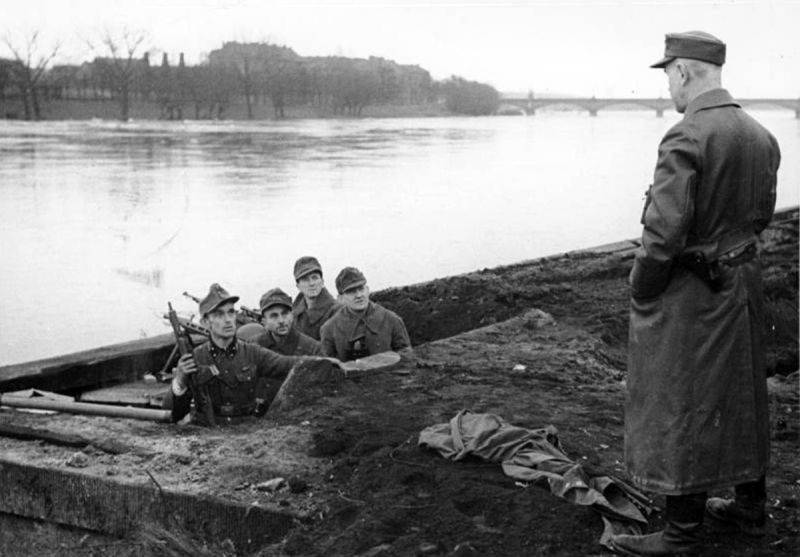
Operation plan
The main blow on the 45-kilometer section from Stettin to Schwedt was delivered by three Soviet armies: the 65th, 70th and 49th armies of Generals Batov, Popov and Grishin. Also, the front's strike force included 5 mobile units: the 1st, 8th, 3rd Guards Tank Corps of Generals Panov, Panfilov and Popov, the 8th Mechanized Corps of Firsovich and the 3rd Guards Cavalry Corps of Oslikovsky. The offensive was supported by the 4th air army of Vershinin.
Having broken through the defenses of the German army on the western shore of the Oder, the Soviet armies were to develop an offensive in the general direction on Neustrelitz and on the 12-15th day of the operation go to Elba Labe. After breaking through the enemy’s front, it was planned to introduce tank and mechanized (49th army) corps in the strip of each army. The 3rd Guards Cavalry Corps remained in reserve. A powerful artillery group was concentrated on the breakthrough site - up to 150 guns per 1 kilometer (excluding 45- and 57-mm guns). Aviation before the offensive, it dealt a strong blow to enemy positions, headquarters, communications centers, and areas of concentration of reserves. During the development of the offensive, each combined-arms army was supported by one assault air division. The Air Force had a particularly important role to play in breaking through enemy defenses. The width of the river and wetlands did not immediately allow to use all the capabilities of artillery. It was impossible to quickly transfer the guns to the west bank, it was necessary to prepare the crossings. Therefore, the main burden of infantry fire training was assumed by aviation. And Soviet pilots coped with this task.
The engineering preparation of the operation also played a large role. Engineering units led by General Blagoslavov did a good job. They prepared and drove dozens of pontoons, hundreds of boats, rafts, a large amount of timber for the construction of moorings, bridges and crossings, built ghats on the swampy areas of the coast.
Forcing Oder
On April 16, 1945, the troops of the 1st BF began an offensive. At night, advanced units crossed the East Oder and occupied dams. Hitler’s advanced posts were overturned. Soviet troops began ferrying to these peculiar bridgeheads. This played an important role in the offensive. Our reconnaissance groups began to cross to the western shore of the Oder, and it happened, and swim. Soviet soldiers captured "languages", conducted reconnaissance in battle, disturbed the enemy. The advance detachments captured the first sections on the western bank of the Oder and held them, reflecting the attacks of the Nazis.
On the night of April 20, 1945, bomber aircraft struck German positions. At night, the advance detachments fought actively for the expansion of previously captured areas on the west bank of the Oder. In the interfluve on the dams continued the accumulation of forces and means. In the floodplain, shield crossings were laid through swamps. In order to mislead the German command, preparations for an offensive north of Stettin were demonstrated. The troops of the 2nd shock army of Fedyuninsky and the 19th army of Romanovsky created all kinds of noise. In fact, Soviet troops were preparing an amphibious operation across the Divenov Strait.
In the morning, artillery preparation was carried out, then the armies of Rokossovsky on a wide front began crossing the river. The crossing took place under the cover of smoke screens. Batov’s army began forcing the river a little earlier (due to the wind, water was flooding into the floodplain). The army prepared a lot of light-type boats, which already paid off during overcoming water obstacles with swampy shores. In shallow water, infantrymen easily carried boats in their arms. Batov was able to quickly deploy a large detachment of infantry to the right bank, armed with machine guns, mortars and 45 mm cannons. He markedly strengthened the advanced groups that had previously entrenched here. Behind them were new echelons of landing.
On the western shore, the most stubborn battles were fought for the dams needed by the Soviet troops as moorings and congresses, where it was possible to unload heavy equipment and weapons that were transported by ferries. In the morning, due to fog and smoke, aviation operations were limited. But from 9 a.m., Soviet aviation began to operate in full force, supporting the advance of the advance detachments. Fights became more violent. With the accumulation of the landed landing groups, the bridgeheads expanded, and the Germans frantically counterattacked, trying to throw our troops into the river.
Soviet engineers set about pontoon and ferry crossings. The Germans tried to stop the crossing with the help of the ships that appeared in the strait. However, Soviet aircraft quickly drove off enemy ships. The bridgehead on the Batov Army site was significantly expanded. The Soviet infantry continued the offensive without the support of tanks and only with light guns. By 13 o’clock, two 16-ton ferry crossings were brought in. By evening, 31 battalions with 50 45 mm guns, 70 82 mm and 120 mm mortars and 15 light Su-76 self-propelled guns were deployed to the west coast. For a bridgehead forces of 4 rifle divisions of two corps fought. During the day, Batov’s troops captured a bridgehead over 6 km wide and up to 1,5 km deep. The German command threw army reserves into battle, trying not to throw the enemy into the water, but at least to restrain the further advance of the Russian troops. The 27th and 28th SS infantry divisions, Langemark and Wallonia, were reinforced with tanks in a counterattack.
The troops of the 70th Army of Popov also successfully crossed the Oder with the help of a mass of boats prepared in advance on the east coast. The main blow was delivered by the army on a 4 km stretch, where the density of artillery barrels was increased to 200–220 per 1 km. 12 battalions with machine guns, mortars and several 45-mm guns were transferred to the other side. The Germans stubbornly resisted, only in the morning our troops repelled 16 counterattacks. The Nazis, taking advantage of the lack of Russian artillery, actively used tanks. A major role in repelling enemy attacks was played by aviation. The dominance of our Air Force in the air was complete. The Germans conducted only air reconnaissance.
Army artillery could not immediately crush the enemy’s strong stronghold in the Greifenhagen area, opposite the destroyed bridge over the West Oder. Therefore, the Nazis fired heavily and for a long time did not allow our troops to go along the dam, to use it for the transfer of heavy weapons. Only after the strike of our attack pilots, who supported the infantry attack, the stronghold was neutralized. The sappers immediately began to cross the river. By the end of the day, 9 landing, 4 ferry crossings and a 50-ton bridge operated. Six ferries plied along the river, towed by amphibious vehicles. Artillery was thrown to the west bank of the Oder, which facilitated the position of the infantry.
On the site of the 49th army of Grishin, the situation was more complicated. Here the Nazis repelled all attempts at crossing. Army intelligence made a mistake. The Oder interfluve here was cut by canals. One of them was mistaken for the main course of the West Oder and brought down the main artillery fire on its western shore. As a result, when our infantry forced the canal and approached the West Oder, heavy fire fell on it. For the most part, German firing positions were not affected. The army had special hopes, it was supposed to support the offensive of the right wing of the 1st BF, which had begun the offensive earlier. Grishin’s army was supposed to cut through the enemy’s defenses and toss the units of the 3rd Panzer Army here north and northwest. Therefore, it was decided on April 21 to resume the offensive.
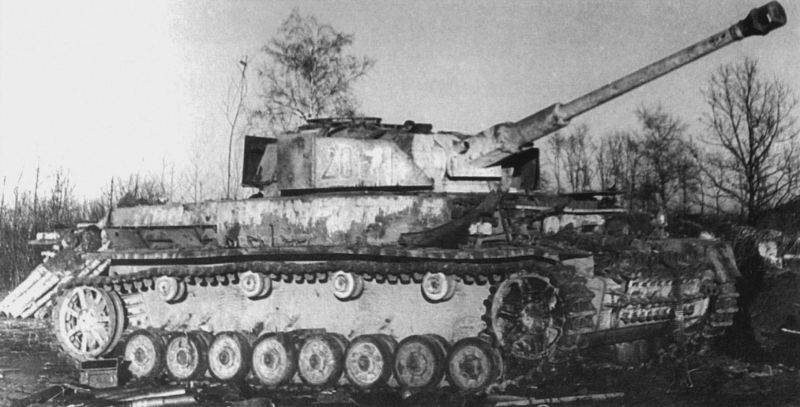
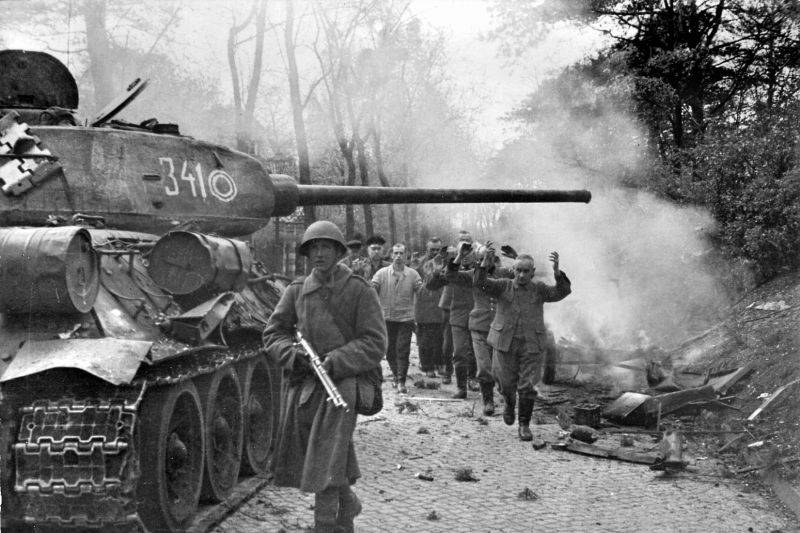
German defense breakthrough
Fights to expand the bridgeheads continued at night. The active transfer of troops to the bridgeheads continued, their position was now quite solid. At night, Soviet bombers attacked enemy positions on the 49th Army site.
In the afternoon fierce battles continued, the enemy defenses were nibbled. There were few Soviet troops on the bridgeheads to go on a decisive assault. And the Nazis made every effort to throw the Russians into the water. But our soldiers and commanders stood to their deaths, not only did not retreat, but also continued to expand the occupied territory. On the site of Batov’s army, the Germans threw another infantry division into battle. Since success was marked on Batov’s site, two motorized pontoon battalions with their parks that had previously been assigned to the 49th Army were transferred here. By evening, 30-ton and 50-ton bridges and a 50-ton ferry operated. There were also six ferry crossings on the river, of which two large 16-ton ferries.
On the site of the 70th army, successes were more modest, but Popov’s troops also expanded the bridgehead. New crossings were made across the river. This made it possible to transfer new infantry forces and divisional artillery to the west bank. The 49th Army was able to capture two small bridgeheads. Grishin’s army was the worst. The Germans here continuously attacked. As a result, the front command decided to shift the center of gravity of the strike to the right flank. The reinforcements given to the 49th Army were transferred to the 70th and 65th Armies. The 49th Army itself was supposed to continue part of the fighting on the bridgeheads, distracting the enemy, and the other to force the river along the crossings of the neighboring 70th Army.
On April 22, Batov’s army continued to crush the enemy, expand the bridgehead, and took several settlements. The Germans fiercely resisted, but they were pressed. All rifle formations of the army, anti-tank brigade and mortar regiment were transferred to the west coast. At night, they built a 60-ton floating bridge, which allowed the transfer of heavy weapons. The 70th army also continued to crush the enemy, to transfer new battalions. The 4th Air Army actively supported the ground forces and played a large part in repelling the tank attacks of the German army (there was still not enough artillery on the bridgeheads). As a result, the bridgehead on the west coast of the West Oder was expanded to 24 km wide and 3 km in depth.
By April 25, the troops of Batov and Popov, reinforced with front-line weapons, advanced another 8 km. The bridgehead was expanded 35 km wide and 15 km in depth. The 65th Army deployed part of its forces to the north, against Stettin. Tanks of the 70rd Guards Corps Panfilov went along the crossings of the 3th Army. The main forces of the 49th Army were drawn to these crossings. The soldiers rushed forward, the victory was near! The German command threw practically all available reserves into battle: the 549th infantry division from the Stettin area, the 1st marine division, the anti-tank brigade, the Friedrich tank fighter brigade, etc. However, all German counterattacks were repelled. Batov’s army had already transferred all three of its corps, Popov’s army — two, the third was on the way, two guards tank corps — the 3rd and 1st — crossed the river.
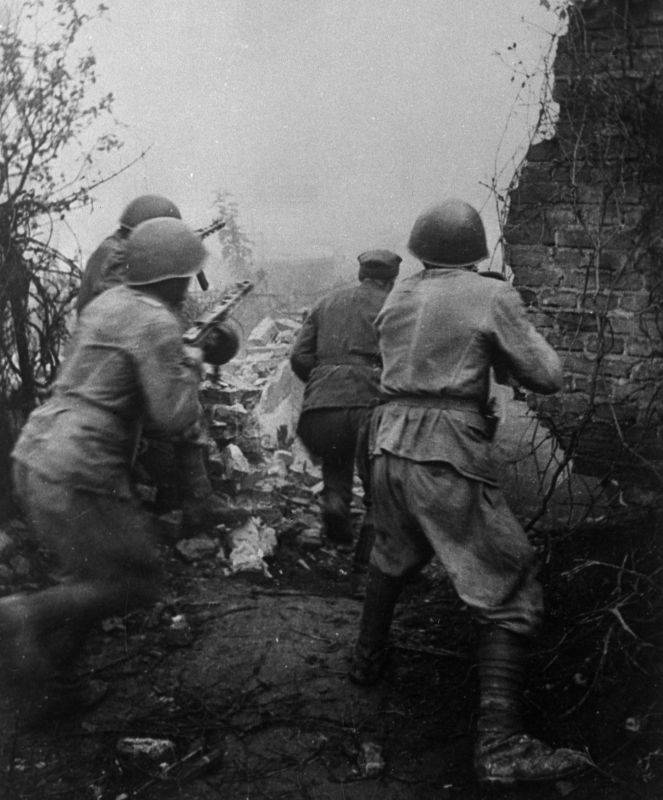
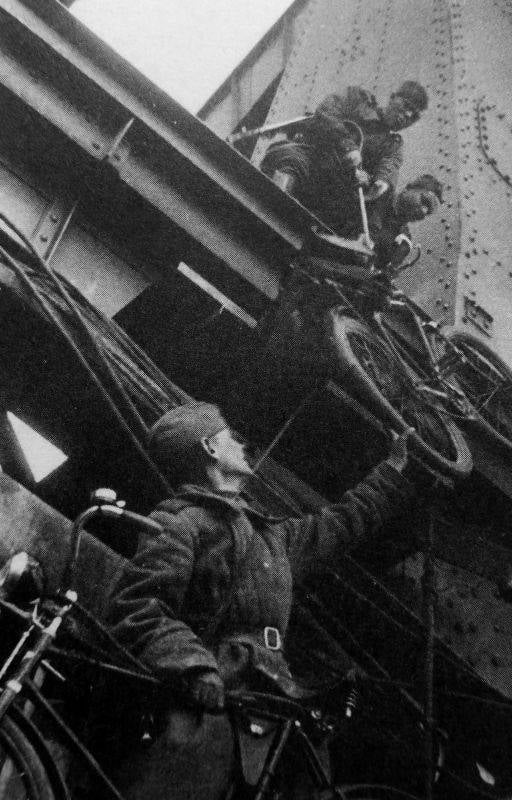
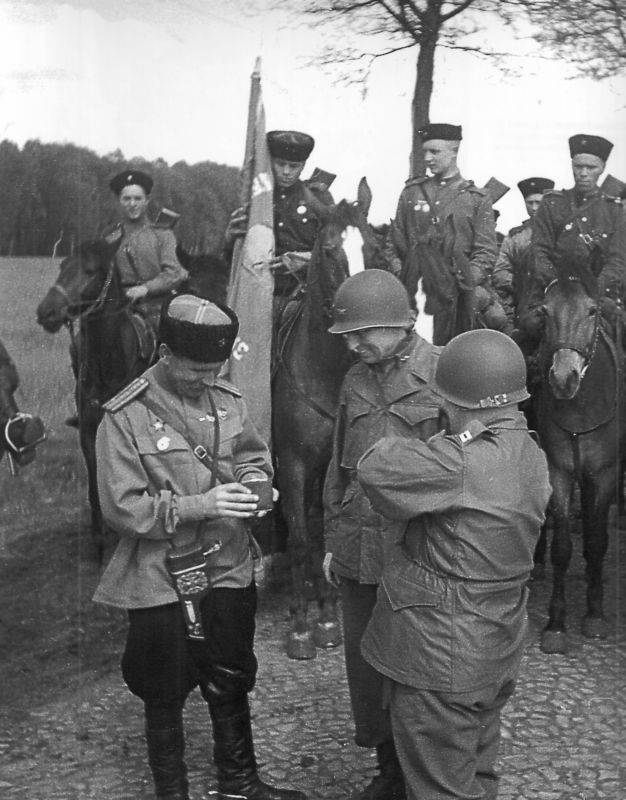
Elbe
Our troops repelled the enemy’s counterattacks, completed a breakthrough of defense on a 20-km stretch, and on his shoulders broke through to the second line of defense on the Randov River. The Germans could not offer strong resistance at this line - almost all were defeated during the battle on the western bank of the Oder. In addition, the powerful offensive of the armies of Rokossovsky did not give the Germans the opportunity to transfer part of the forces of the 3rd Panzer Army for the defense of Berlin. The 2nd shock army was partly aimed at Anklam, Stralsund, the other part was to occupy the islands of Usedom and Rügen. Fedyuninsky’s army was strengthened by one corps of the 19th army. The 19th Romanovsky army also began to move, it advanced on the coastal flank on Swinemuende and further on Greifswald. Batov’s army and Panov’s Guards Corps were aimed northwest to defeat German troops northeast of the Stettin – Neubrandenburg – Rostock line. The 70th Army of Popov with the 3rd Panzer Corps was advancing on Waren, Gismore and Wismar. Grishin’s 49th army, with the 8th Firsovich mechanized corps and the 3rd Oslikovsky corps, went straight west to the Elbe. She had to cut off the German units, which were sent to the rescue of Berlin, to throw them under the blows of the neighboring 70th army.
On April 26, 1945, Rokossovsky’s troops stormed Stettin (Slavic Szczecin), broke through the enemy’s second line of defense on the River Randov and rushed west. The Nazis still resisted, threw into the battle all that was available. Including only formed militia battalions. However, their desperate counterattacks were repelled. The German units thrown into battle were defeated. The Soviet armies broke into the operational space and quickly developed the offensive. Tanks rushed forward. Large-caliber artillery demolished strongholds of the enemy. Jet artillery swept away the counterattack of the Nazis. The aircraft attacked the remaining nodes of resistance, smashed the enemy’s suitable reserves. Using the ferries of the 70th army, the 49th army deployed at full strength. With a blow to the flank and rear, Grishin's army defeated the enemy units that were defending on its site.
On April 27, our troops advanced rapidly. The Germans could no longer provide strong resistance, somewhere to gain a foothold. The Nazis retreated to the west, destroyed communications, hoping to surrender to the Allies, but in places they still snapped back. The 2nd shock army occupied the island of Gristov, went to Swinemuende, part of the army went to Stralsund. On the way, Fedyuninsky’s army finished off the remains of the Stettin group. Soon, the 2nd Shock Army of Fedyuninsky and the 65th Batov reached the Baltic Sea. In the central section, the Germans tried to organize resistance in the wooded-lake region of Neustrelitz, Waren and Fürstenberg. The troops defeated on the Oder, units that retreated under the blows of the right flank of the 1st BF, went here. Also here were parts transferred by sea from the Danzig Bay area and from the Western Front, which had previously been planned to be thrown to save Berlin. The Nazis put up fierce resistance, but were destroyed under the blows of the 70th and 49th Soviet armies with the support of mobile units and the Air Force. Neustrelitz was occupied on April 30, and Varin on May 1. The offensive of the troops of Popov and Grishin continued non-stop.
On May 1, 1945, Stralsund and Rostock fell. On May 3, Panfilov’s tankers southwest of Wismar established contact with the intelligence of the 2nd British Army. On May 4, troops of Popov, Grishin, Firsovich, and Oslikovsky cavalry entered the line of demarcation with the allies. In the meantime, the armies of Fedyuninsky and Romanovsky cleared the Nazis of Wollin, Usedom and Rugen from the Nazis. Also, two divisions of the 19th Army were landed on the island of Bornholm, where the German garrison refused to capitulate. On the island, about 12 thousand enemy soldiers were disarmed.
On this operation was completed. Victory! Rokossovsky recalled:
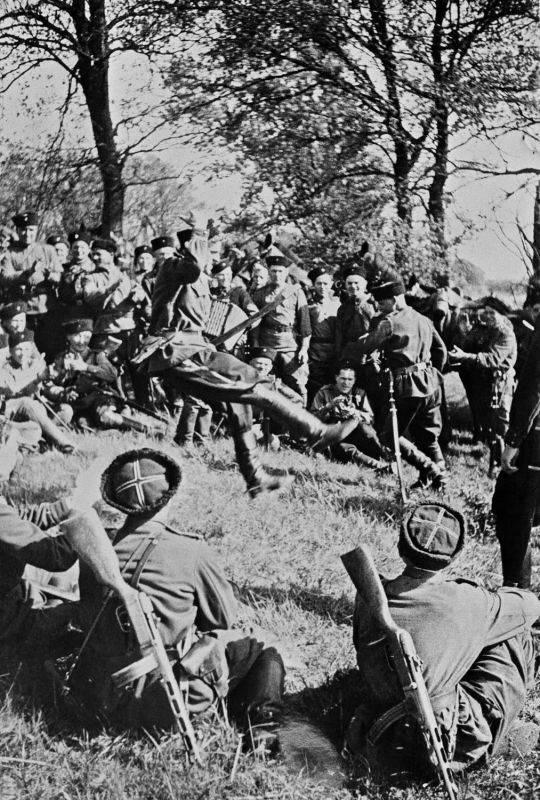
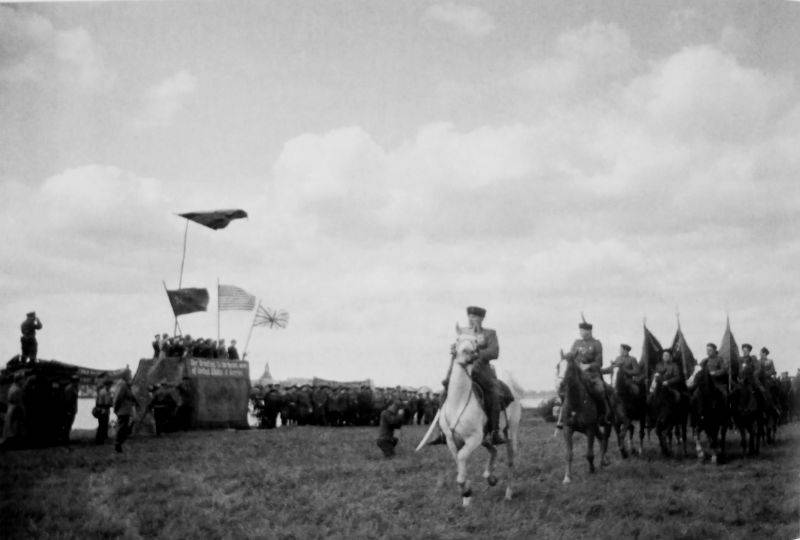
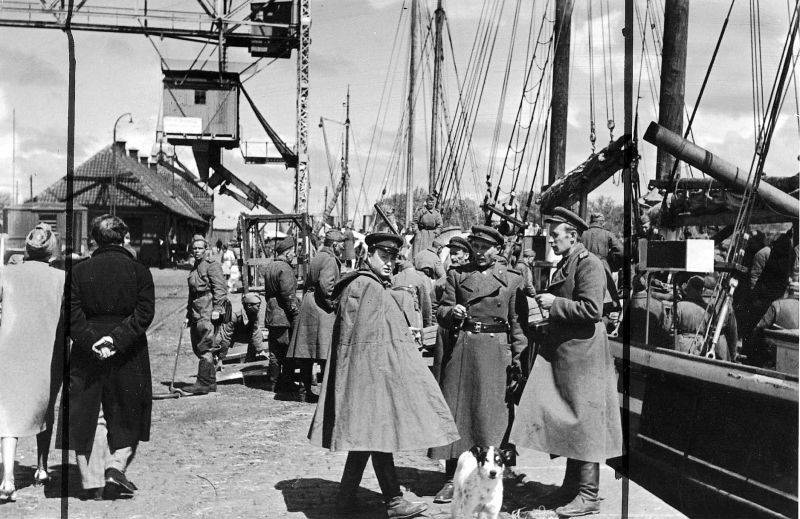
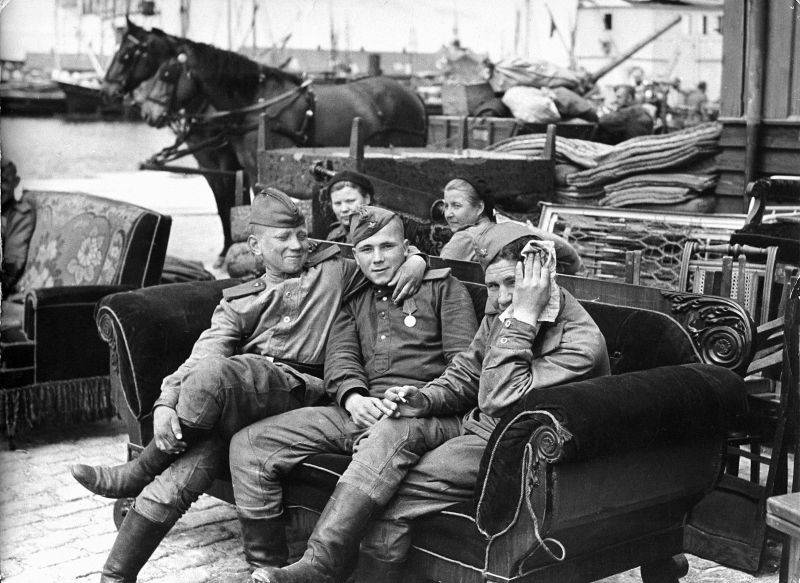
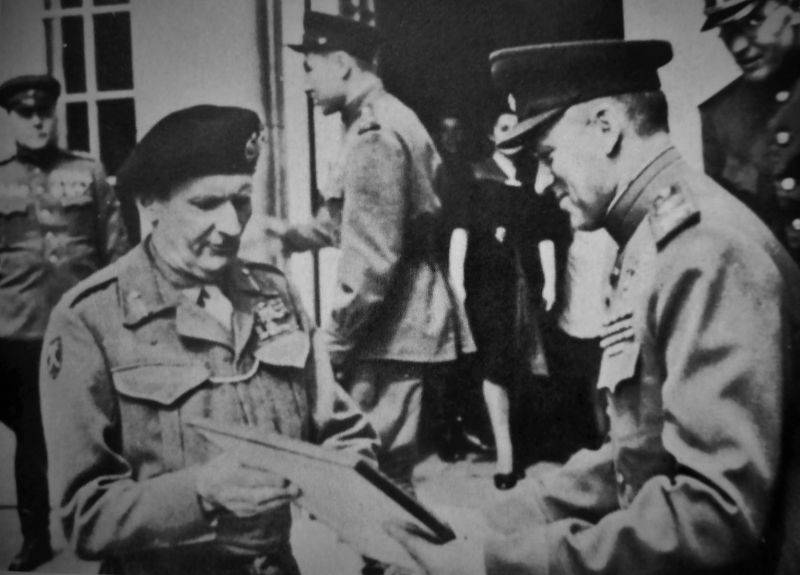
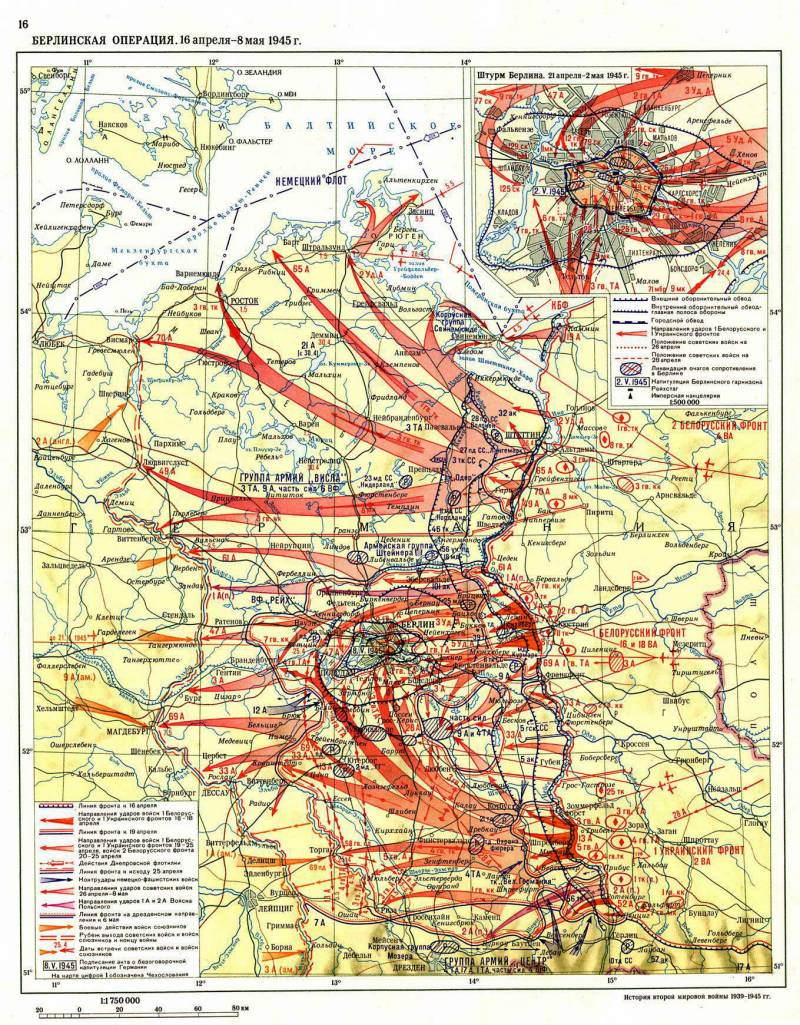
Information